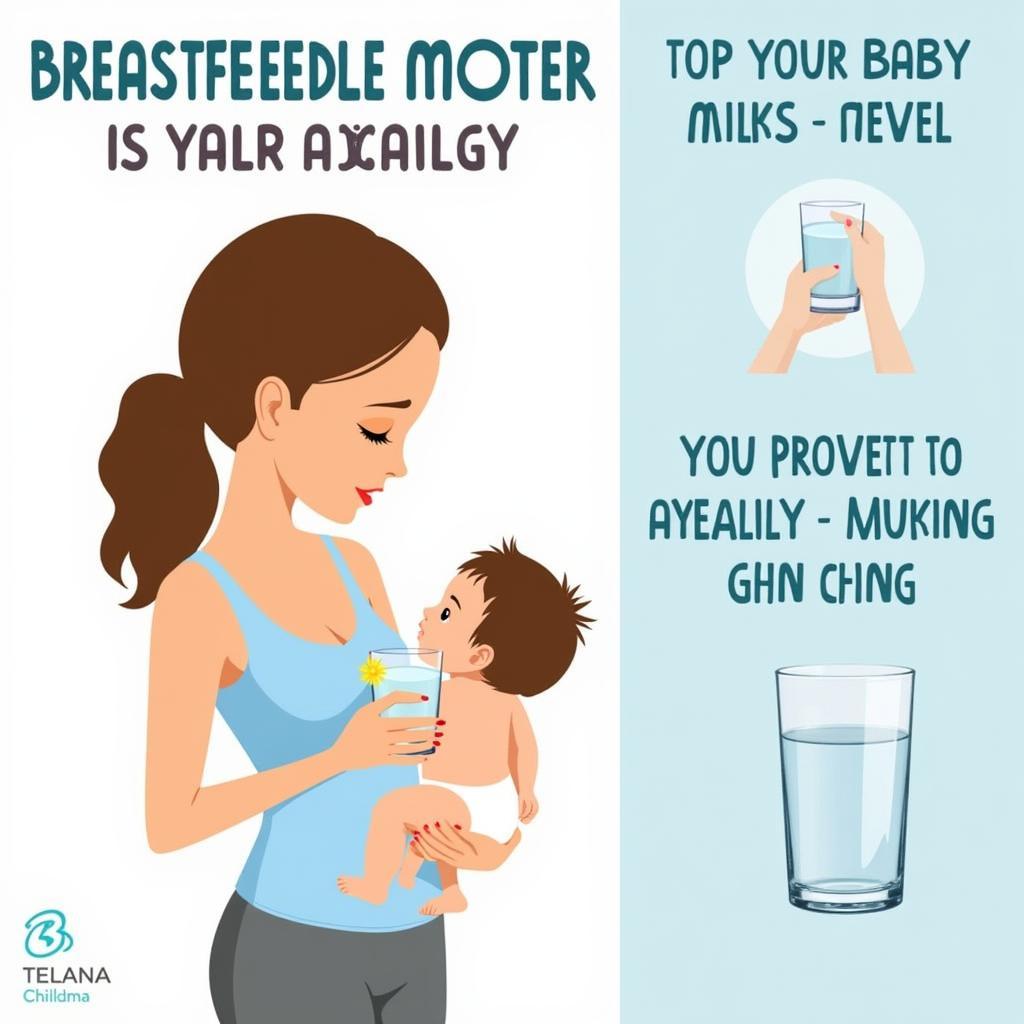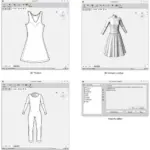Breastfeeding is a crucial period for both mother and baby. A healthy diet plays a vital role not only in the mother’s postpartum recovery but also in ensuring a sufficient and nutritious milk supply for the infant. In many cultures, including Vietnamese tradition, certain foods are believed to have “cooling” properties, promoting better milk production and overall well-being for the mother. This article explores what breastfeeding mothers should eat for optimal milk supply, incorporating these traditional beliefs about “cooling” foods.
Nourishing Foods for Breastfeeding Mothers
A well-balanced diet is essential for breastfeeding mothers to replenish nutrients depleted during pregnancy and childbirth and support the demands of milk production. This section outlines key food groups and specific examples of what breastfeeding mothers should eat for a healthy milk supply.
Protein-rich foods: Lean meats, poultry, fish, eggs, beans, lentils, and tofu are excellent sources of protein, which is crucial for the baby’s growth and development. Protein also helps the mother recover from childbirth.
Calcium-rich foods: Dairy products like milk, yogurt, and cheese are rich in calcium, essential for the baby’s bone development and the mother’s bone health. Leafy green vegetables like spinach and kale also offer good calcium content.
Iron-rich foods: Iron is vital for red blood cell production and preventing anemia, a common concern during and after pregnancy. Include iron-rich foods like red meat, beans, and fortified cereals in your diet.
Whole grains: Whole grains such as brown rice, quinoa, and whole-wheat bread provide fiber, which aids digestion and can help prevent constipation, a common postpartum issue. They also provide sustained energy.
Fruits and vegetables: A variety of colorful fruits and vegetables offer essential vitamins, minerals, and antioxidants, supporting both the mother’s and baby’s health.
 A breastfeeding mother enjoying a healthy meal with a variety of fruits, vegetables, and protein.
A breastfeeding mother enjoying a healthy meal with a variety of fruits, vegetables, and protein.
The Concept of “Cooling” Foods in Postpartum Nutrition
In many cultures, certain foods are believed to have “cooling” properties, beneficial for postpartum recovery and lactation. These foods are often thought to help balance the body’s temperature, promote milk production, and prevent heat-related discomfort. While scientific evidence supporting these claims may be limited, incorporating these traditional beliefs into a balanced diet can provide psychological comfort and align with cultural practices.
Green leafy vegetables: Spinach, lettuce, and other leafy greens are often considered “cooling” and are excellent sources of vitamins and minerals.
Watery fruits and vegetables: Watermelon, cucumber, and other water-rich produce are believed to hydrate the body and have a cooling effect.
Soups and broths: Warm, light soups and broths can be soothing and hydrating, especially during the postpartum period.
What to Avoid While Breastfeeding
While focusing on what to eat, it’s equally important to be aware of foods and beverages to limit or avoid during breastfeeding.
- Alcohol: Alcohol can pass into breast milk and affect the baby’s development. Limit alcohol consumption or abstain completely.
- Caffeine: High caffeine intake can make the baby fussy and irritable. Moderate caffeine consumption is generally considered safe.
- Fish high in mercury: Limit consumption of fish high in mercury, as it can be harmful to the baby’s nervous system.
Hydration and Breastfeeding
Staying hydrated is crucial for breastfeeding mothers. Drink plenty of water throughout the day. Herbal teas and soups can also contribute to fluid intake.
 A breastfeeding mother staying hydrated by drinking water.
A breastfeeding mother staying hydrated by drinking water.
Conclusion: Nourishing Yourself and Your Baby
A well-balanced diet, rich in protein, calcium, iron, and a variety of fruits and vegetables, is essential for breastfeeding mothers. Incorporating traditional beliefs about “cooling” foods can provide added comfort and align with cultural practices. Remember to stay hydrated and avoid or limit certain substances like alcohol, caffeine, and fish high in mercury. By focusing on a healthy diet, you can nourish yourself and provide your baby with the best possible start in life. For transportation needs in Hanoi, TRAVELCAR offers car rental services for various group sizes, including 16, 29, and 45-seater vehicles. We also provide airport transfers and customized tours.
FAQ
- How much water should a breastfeeding mother drink daily?
- Are there any specific foods that can increase milk supply?
- Can I eat spicy food while breastfeeding?
- How can I incorporate “cooling” foods into my diet?
- What are the benefits of eating iron-rich foods during breastfeeding?
- How can I ensure I’m getting enough calcium while breastfeeding?
- What are some healthy snack options for breastfeeding mothers?
Need support? Contact us at Phone: 0372960696, Email: TRAVELCAR[email protected] or visit our office at 260 Cau Giay, Hanoi. We have a 24/7 customer service team.

